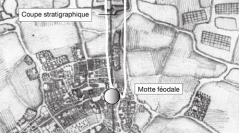

 Anthropozoologica
50 (2) - Pages 109-122
Anthropozoologica
50 (2) - Pages 109-122Along the European Atlantic facade, the consumption of flat oysters (Ostrea edulis Linnaeus, 1758) has been known since the Mesolithic era (Gutiérrez-Zugasti et al. 2011). This observation is also true for French coasts (Dupont 2006). Especially during Antiquity, the exploitation of this species became extensive (Ferdière 1988). With the development of transport facilities, oysters were found at archaeological sites located hundreds of kilometers away from the coast. This is a clear hint of their success that lasted into the Middle Ages. Along the Atlantic coast, large accumulations of oysters are recovered from so-called middens, some of which are well-known because they form conspicuous land-marks. However, the majority of such middens are thought to be hidden under modern villages. In France, archaeological sites where marine shells – in particular oysters – form the majority of consumption refuse, are only rarely excavated. Therefore, the present study about Beauvoir-sur-Mer (Vendée) is rather novel. The site can be characterized as an enormous shell midden 1700 × 25 m in size and 1-2 m thick. It is dated to between the 7th and 14th centuries AD. Near to the site, a castle was constructed during the 13th century AD. The formation of the shell midden began before, and continued during the castle occupation. For the current analysis, a sample of 5673 shell remains was studied. The analysis presented here, mainly focusses on how the oysters were exploited on the coast, in what type of environment, how they were selected etc. Biometrical analyses linked to the observation of traces produced from the opening of the bivalves, showed in particular that bigger oysters were opened on-site and their flesh was extracted immediately. This way of handling oysters was known from the Middle Ages. However, actual archaeological research at Le Langon shows that this could well have been practiced ever since Antiquity. The associated fauna identified at Beauvoir-sur-Mer informs us about the range where the oysters have been exploited and the kind of biotope in which they were gathered. The results gained for this site are compared to accumulations of oysters from other historic sites in the region.
Ostrea edulis, flat oyster, Middle Ages, specialization, palaeoenvironment